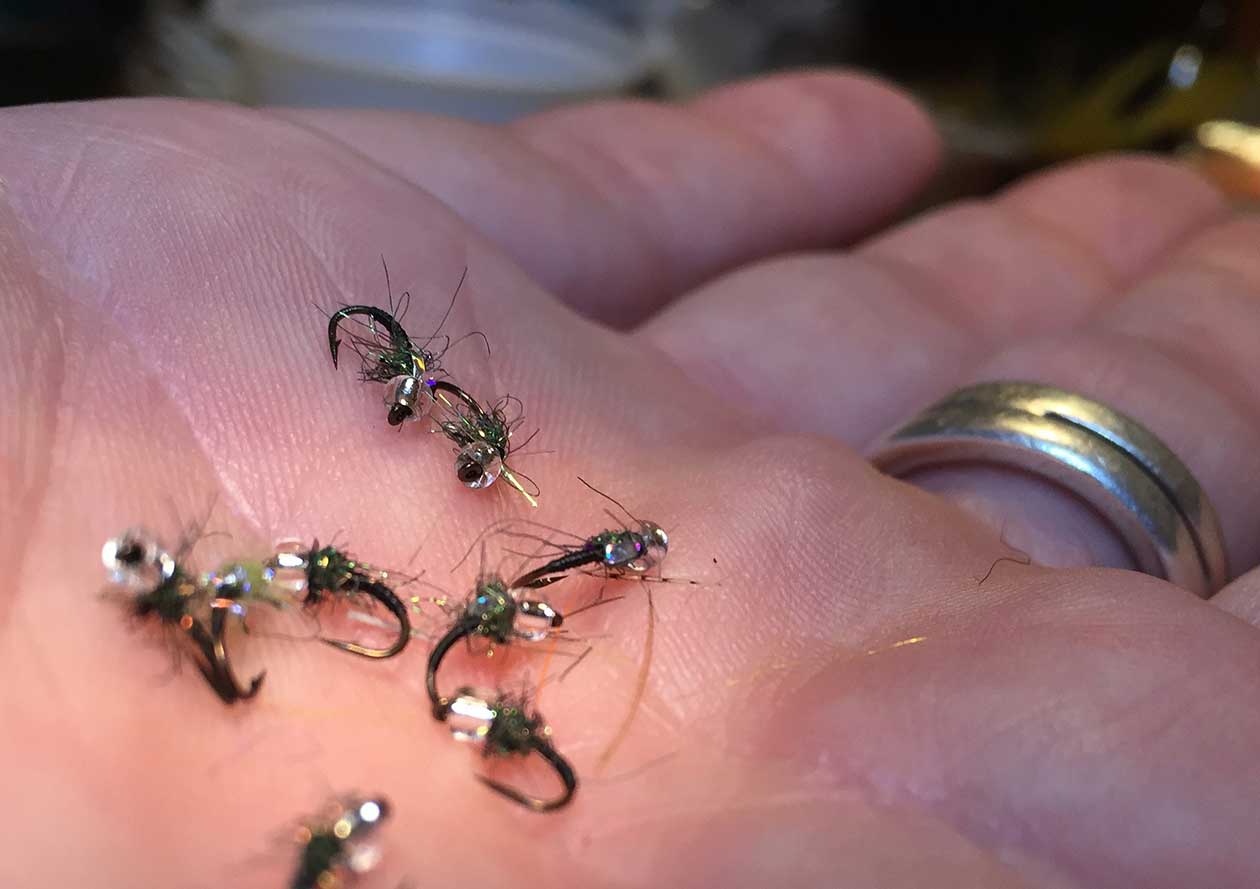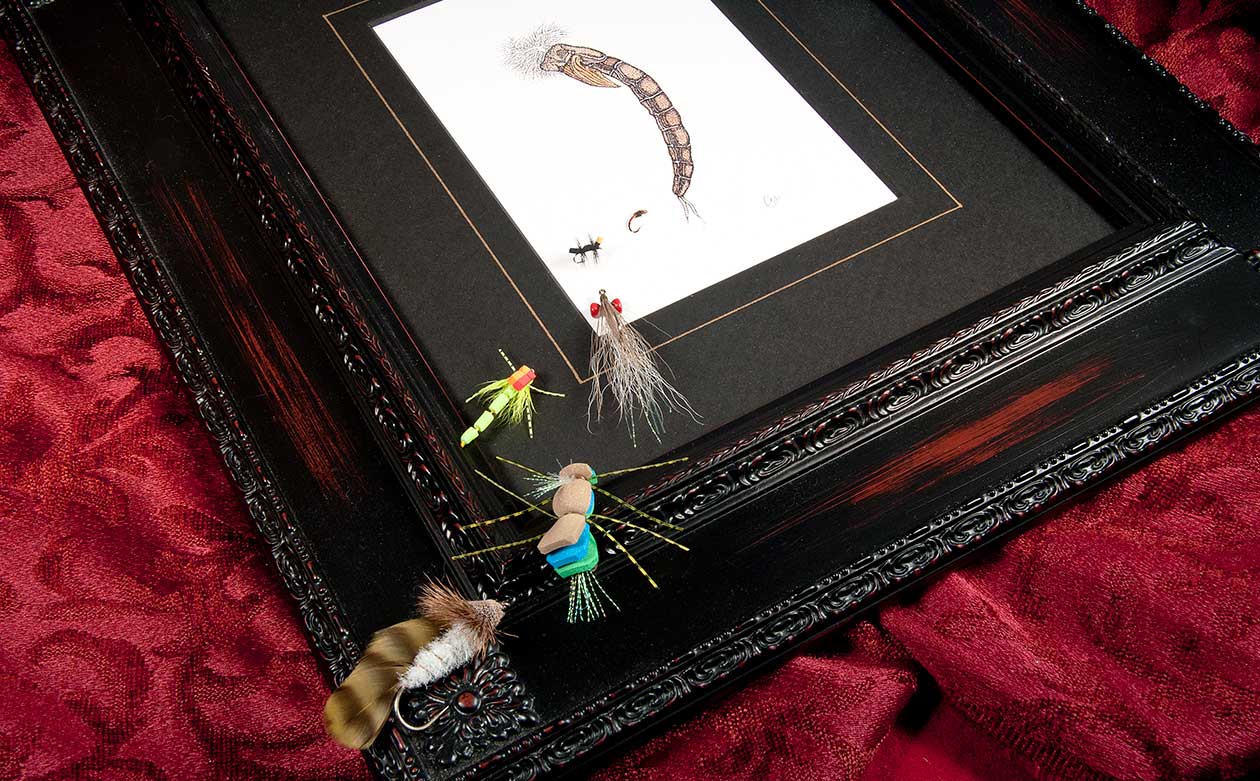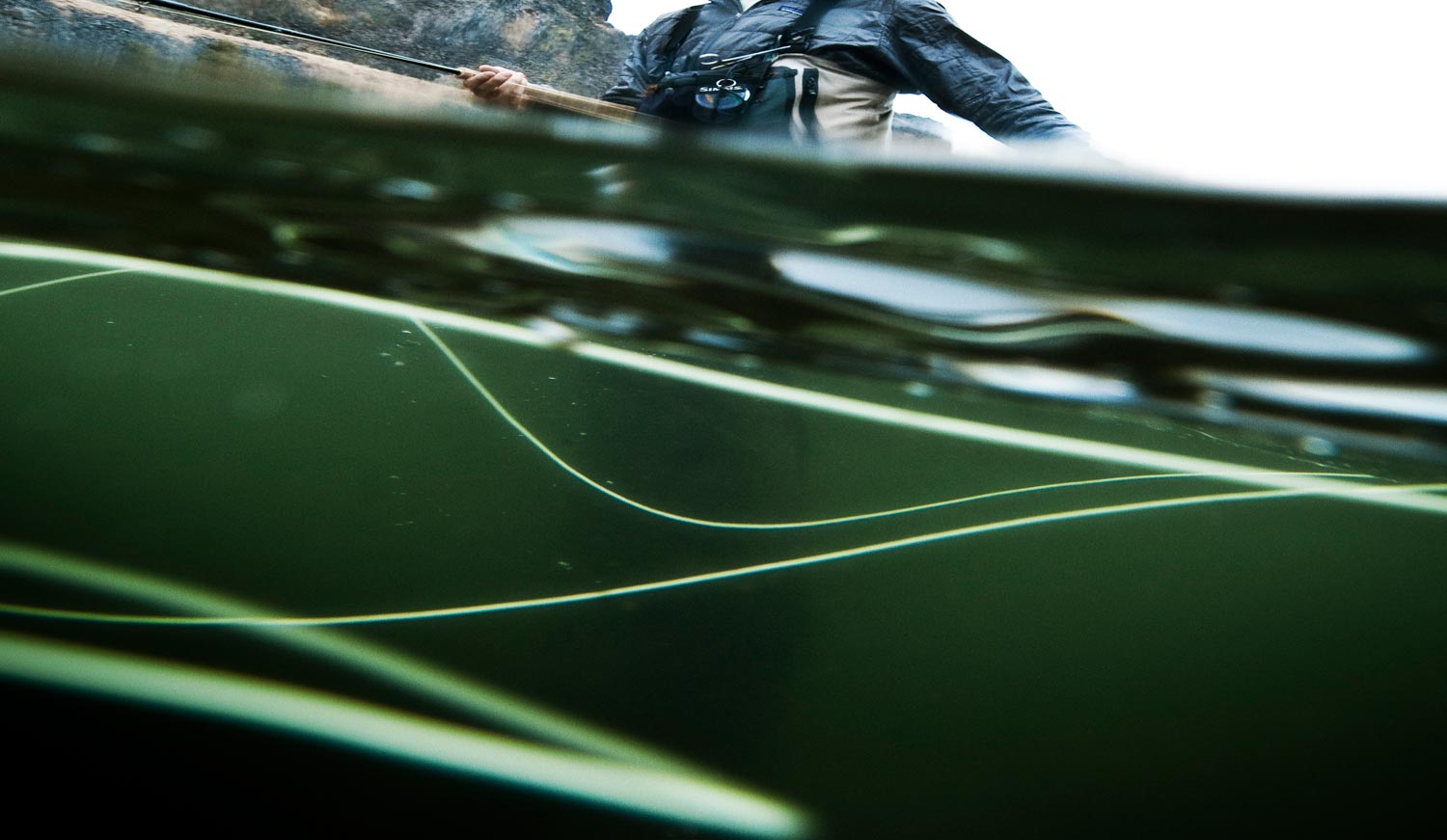Smaller and Quieter Can Be Better, Part I: Trout Streams and Hatches

photo by animal vegetable miracle
I’ve noticed a theme among new and once-in-a-while fly fishers: they worry that trout can’t find their fly. It’s a logical concern—in your average stream there’s typically a lot of water out there per fish. But as it turns out, it’s often an unreasonable concern—trout’s lives are simple and, so, free of human distractions (careers, taxes, patching waders, getting haircuts…), they can concentrate on the few things they do (avoiding predators, finding food, finding oxygen and comfy currents and temperatures, and occasionally, mating), and consequently learn to do them extremely well. Actually, they must do them well, in order to survive. (Except that last one. Doing that one well would just be a matter of courtesy, and perhaps pride.) Getting good at finding food also means good at finding artificial flies—if trout are there and want your fly (and if you present it well and put it reasonably near them), they’ll find it. So that’s the real first step, isn’t it?: Determining whether or not trout are there.
Some parts of a stream generally hold few trout—or none—while other parts typically hold plenty. If you don’t know which parts are which, and you wind up on a part free of trout, it doesn’t much matter what fly you fish or how you fish it. It also means you’d better bone up on reading water. But if you are fishing where trout are present in good numbers and they don’t take your fly, the problem may simply be that they don’t want it.
So while fly fishers who don’t know all this are retrieving their flies ever more feverishly and tying on ever larger, ever more-gaudy flies in an effort to get them noticed, the solution may be the opposite: to cut down or even eliminate action imparted to the fly and to go subtle and small.
Of course, fishing isn’t mathematics—same factors in, always same results out. At its heart, fishing is really a blend of knowledge, detective work, experimentation, experience, and plain stupid luck. So sure, a big showy fly worked vigorously may do the trick, just as the newbie expects. And because fishing is such a roulette wheel, giving that big fly a quick lunging retrieve may produce best even where that’s generally considered inappropriate to the point of heresy, as on such hallowed spring creeks as Idaho’s Silver Creek and Pennsylvania’s Letort Spring Run—on these waters, exact presentation of miniscule flies is not only standard practice but revered tradition.
So let’s say that, today, a madly darting size-2 Woolly Bugger with a lot of chrome Mylar killed—why, then, not always rely on it, along with other bright, massive trout flies and frantic retrieves? Answer: because tomorrow’s not today—tomorrow it may fail. And fail utterly. It still surprises me sometimes how often a trout that’s plainly feeding will dodge big glittery flies drifted right into his face, flies swimming or jiggling in his face, or the whole works: big, glittery, and jiggling in the face. How about that?—maybe trout aren’t dumb. Maybe they learn, and grow selective. You think?

photo by Carol Ann Morris
Imagine that you’re standing in the shallows and the trout are showing at the surface of a large river well out, rising in earnest rhythms. Do you twitch a Clouser Minnow past their noses? Maybe…. Do you send a big Chernobyl Ant out there, a fly you and the trout both can’t miss? Perhaps…. But you’ll probably do better by watching the water closely, seeing what insect appears—mayfly, caddisfly, midge, something else?—seeing how that insect moves or doesn’t move, and then picking out a fly that matches its looks and size and making that fly behave as the natural behaves. The sort of approach that might convince one of those selective trout I mentioned.
Particularly during a “hatch,” (fly-fishing newcomers, that’s a group emergence of a particular insect) trout tend to lock onto the insect of the moment at a certain stage in its transitioning, and refuse all else. It’s a glorious time for the fly fisher who loves the challenge of getting the fly pattern and its presentation right, but also a frustrating one when he or she can’t. On average, it’s a useless time for big, bright, busy flies. Many of the waters famous for the fussiness of their trout—the Missouri River in Montana and Big Spring in Pennsylvania, for example (both of which I’ve fished, and yes, their trout were fussy)—fill the boxes of their devotees with dozens to hundreds of modest size-12 down to dinky size-24 imitations. Why? Because tough trout focused on hatches demand correct imitations, and correctly imitating the variety of bugs that hatch from a trout stream can require flies in all sorts of sizes, colors, and shapes.
(That said, it is possible to narrow a fly selection down to general types—mayfly or caddis, dark or light, in a sensible range of sizes—and still catch some cagey trout. For more reasonable trout the selection can narrow further. In other words, don’t despair: you can go a long way with only a modest number of trout-flies.)
It’s usually all pretty manageable when the insects, and the flies that match them, are of at least fair size, 16, 14, and larger. But you can’t easily escape the ubiquity of the runt bugs/smart trout scenario. You’d probably have to sort through quite a few streams to a find a few that lack it entirely. Some trout streams are nearly all about tiny flies—Colorado’s South Fork of the Platte, New Mexico’s San Juan. . . Size-26s won’t impress the old hands of those rivers.
There’s an old rule that says if your fly matches the size of the hatching insect and the trout won’t touch it—or especially if they slide up to it but turn away just short—try going to a the same fly a size smaller, and if that doesn’t work, perhaps a size smaller yet. This strategy often does work with persnickety trout. Maybe because we fly fishers tend to judge bugs as bigger than they really are. Going the other direction, one size up, rarely pays off in my experience—for some reason, fussy trout tend to prefer smaller flies over larger ones during hatches. Now that you know this, what will you do the next time a rising fish drifts off its feeding lane to let your size-14 Parachute Adams pass untouched? (I hope your answer will be, Tie on a Parachute Adams in size 16.)
Matching the size of the prevailing insect neatly suits logic; going smaller than the insect doesn’t. But going a tad smaller sometimes turns a trout that ignores your fly into a taker. I’m not sure why.
It doesn’t end there—smart trout seem to find all sorts of ways of making us fly fishers fish dinky flies. Suppose you’ve got a good hatch of big Western Green Drake mayflies going on your trout stream. Slam-dunk, as the cliché goes, right? Hold on. Peppered between those drakes are dark midges, nearly invisible to the casual eye (and that’s the problem with the casual eye in fly fishing—it misses easy-to-miss-but-important stuff), matching size 22 hooks. Regardless, the trout will of course choose the big-meat item, the drakes, right? In my experience, not necessarily—there’s at least a 50% chance they’ll ignore the Drakes and give the midges their full attention. According to Swisher and Richards such behavior is, in fact, meat-based. In Fly Fishing Strategy they explain: “We are sure that fish will feed on the particular stage of the particular insect drifting over his lie that represents the greatest pounds of meat.” They explain further that dinky insects typically hatch in “great numbers,” and that “this is why fish feed on smaller insects so often.” It all adds up to what they call their “pounds of meat law.” And by now we’ve crept back to logic, the sort of logic that’s only logical once you understand the details that provide the logic behind it.
The point behind all this: When insects are hatching and trout are feeding on them, don’t worry about getting your fly noticed by its size or showiness or by making it dash and dart like a gazelle. Instead figure out which insect and which stage of that insect’s hatching the trout have chosen, and then match everything about its form and movement and its size. And if you figure you’ve got everything right but the trout aren’t taking your fly, try the same fly tied on a smaller hook.
(In “Smaller and Quieter Can be Better, Part II,” we’ll explore how little nymphs and little dry flies, worked sedately or not at all, can be the answer for stream trout when insects aren’t hatching.)











